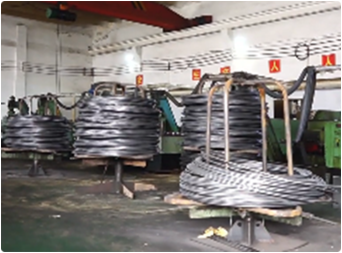set. . 01, 2024 15:54 Back to list
anchor bolt
Understanding Anchor Bolts Essential Components in Construction
Anchor bolts are crucial fasteners used in construction to secure structures to their foundations. They play a significant role in ensuring the stability and safety of buildings, bridges, and various infrastructures. In this article, we will explore the importance, types, installation methods, and applications of anchor bolts.
Importance of Anchor Bolts
Anchor bolts provide a reliable connection between structural elements and concrete foundations. They help resist forces such as tension, shear, and uplift that a structure may experience due to environmental conditions, including wind, earthquakes, and the weight of the building itself. Without adequate anchor bolts, a structure may become unstable, leading to potential hazards and failures.
Types of Anchor Bolts
There are several types of anchor bolts, each designed for specific applications and load requirements. The most common types include
1. Straight Anchor Bolts These are the simplest form of anchor bolts, featuring a smooth shaft and a threaded end. They are typically embedded in concrete and used for securing equipment or structural elements.
2. L-Bolts Shaped like the letter L, these bolts are used where a horizontal load is required to be resisted. The short end of the L is embedded in the concrete while the long end is used to secure objects on the surface.
3. J-Bolts Similar to L-bolts, J-bolts are shaped like the letter J. They are embedded in concrete with the curved portion providing grip against the concrete and anchoring structures like fences or posts.
4. Expanding Anchor Bolts These bolts have a mechanism that allows them to expand upon installation, providing a strong grip on the surrounding material. They are commonly used in applications involving hollow walls or masonry.
5. Sleeve Anchors These are used in masonry or concrete to secure items to a wall. The sleeve expands as the bolt is tightened, anchoring it effectively in the base material.
anchor bolt

Installation Methods
The installation of anchor bolts requires careful planning and execution. Here are the general steps involved in the process
1. Site Preparation Ensure the foundation is ready, clean, and free of debris. Precise measurements should be taken to determine the exact locations for the bolts.
2. Drilling Holes Depending on the type of anchor bolt, holes must be drilled into the concrete or masonry. The diameter and depth of the hole are critical for ensuring a secure fit.
3. Insert Anchor Bolts The bolts are inserted into the drilled holes. For expanding bolts, they need to be installed according to the manufacturer's specifications to achieve the required grip.
4. Securing the Connection Once the bolts are in place, they are tightened to the specified torque. Proper torque is necessary to prevent loosening under load.
Applications of Anchor Bolts
Anchor bolts are used in a wide range of applications, including
- Buildings They secure structural frameworks and connect columns to foundations. - Bridges They provide stability and support to bridge decks and components. - Industrial Equipment Heavy machinery often requires anchor bolts to prevent movement during operation. - Solar Panels They secure solar panel mounts to roofs or ground installations.
Conclusion
In summary, anchor bolts are fundamental components in construction that ensure the stability and safety of various structures. Understanding their types, installation methods, and applications helps engineers and builders make informed decisions, ultimately leading to safer and more durable constructions. Whether you are involved in small-scale projects or large infrastructure developments, the significance of anchor bolts cannot be overstated.


